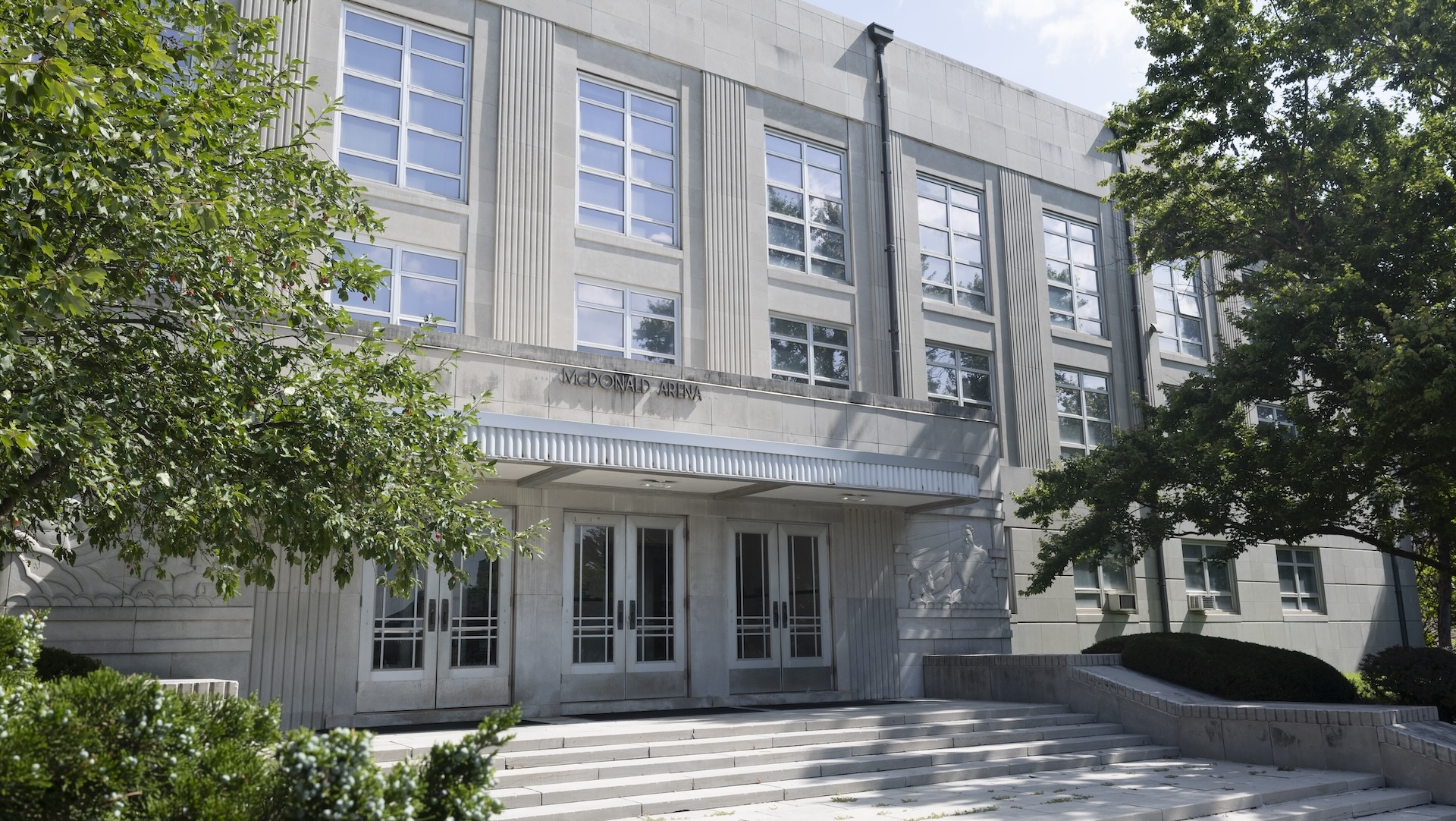Missouri State University's FY 2027 Capital Priority
Investing in Missouri's Future: A $23 million commitment to national security, education and the history of the Missouri State University campus.
McDonald Hall and Arena, built in 1940 as the university’s original sports venue, stands at a pivotal crossroads. With a $23 million capital investment, this historic structure can be transformed into a modern hub for military education, academic excellence and strategic national service.

Strengthing national defense and security education
With this investment from the state, along with private donations and university investment, McDonald Hall and Arena will become the new home of the university’s ROTC and military science programs. This move will elevate Missouri’s only ROTC host program in the southwest region, providing state- of-the-art facilities for:
- National scholarship recipients
- Missouri National Guard members
- Army Reservists
The renovation also supports the pipeline to Missouri State University's School of Defense and Strategic Studies—one of the nation’s top graduate programs in national security and defense. This investment ensures Missouri remains a leader in preparing the next generation of defense professionals.
The School of Defense and Strategic Studies at Missouri State University, known as DSS, comprises two programs: defense and strategic studies and military science (ROTC). These complement and strengthen one another.
- Defense and strategic studies provides graduate education in national security, strategy and international affairs. The program offers a master’s degree, doctoral degree and graduate certificates. Students in the program are connected with policymakers, intelligence agencies and defense institutions.
- The Army ROTC Bear Battalion based on the Springfield campus, prepares undergraduate students for commissioning as officers through leadership development, military training and academic coursework.
These programs serve both civilians and military members.
With these two programs, Missouri State offers students a uniquely comprehensive preparation for national service — linking practical leadership development with deep strategic insight to meet the evolving demands of defense and security in the 21st century.
This capital investment ensures Missouri remains a leader in preparing the next generation of defense professionals.
Expanding academic capacity
The project includes construction of classrooms, offices, storage space and a weight room for ROTC, military science and general university use.
These upgrades will serve a broader student population, meeting growing academic demands while ensuring ADA compliance and access for more students.
Addressing critical infrastructure needs
McDonald’s mechanical systems are 43 years old. Only 17% of the building is air-conditioned, rendering it unusable during parts of the year. The renovation will:
- Fully upgrade electrical and mechanical systems
- Install a new roof
- Address significant deferred maintenance
This is not just a renovation — it’s a rescue mission for a vital campus asset.
A smart investment with long-term returns
This $23 million investment is more than bricks and mortar. It’s a strategic move to:
- Enhance Missouri’s infrastructure related to defense education.
- Improve student outcomes and retention.
- Attract federal partnerships and scholarship funding.
- Reduce long-term maintenance costs.
- Preserve a revered historic building on Missouri State University’s Springfield campus.
Legislators have a unique opportunity to champion a project that aligns with Missouri’s values: service, education and fiscal responsibility. Let’s invest in McDonald Hall — and in the future of our state.